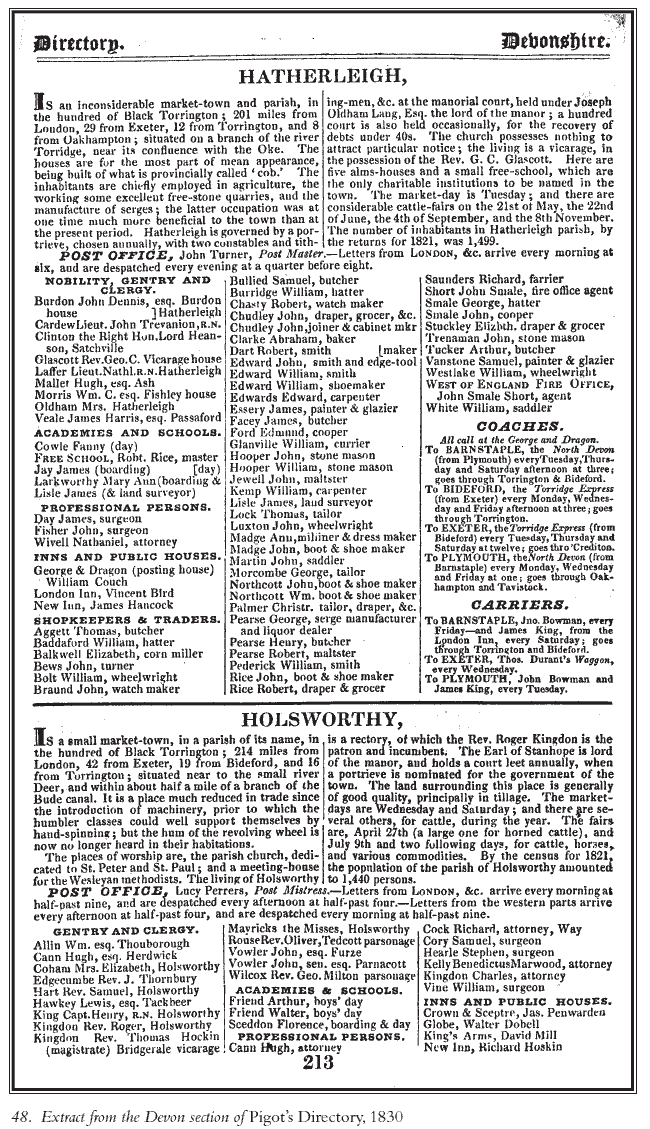Initially, directories were only published for cities and large towns, but a few decades later, they were also published for small towns and rural areas. Interestingly, there were even earlier directories for London, which were published before the directories for other regions. A directory of London merchants was published in 1677 and London directories were published annually from 1734. The number of directories increased enormously during the 19th century. Some covered a county (or a number of counties), a city or even the whole of London. Others covered a few towns (perhaps a particular industrial area) or parts of London. The publication of directories continued until the 1970s when they were superseded by telephone directories.


Directories were originally aimed at commercial travellers and usually contained general descriptions of a city, town or village and its communications (stagecoach and railway connections). An entry for a place then listed its churches, schools, inns, Justices of the Peace, other prominent residents, farmers, shopkeepers and other traders. Advertisements from tradesmen were often included. Illustration 48 is a typical entry for a town (Hatherleigh in Devon) from a county directory of 1830. Directories of the 19th century are especially useful for finding the addresses of people who had their own business. This assists searches in the census records. Entries in directories of successive years may evidence changes of address or even change of business. A typical entry for a trader (taken from a London directory of 1856) is:
7 Grace’s Alley, Wellclose Square; Bernhard Herber; carver and gilder
Similar entries for my ancestor Bernard Herber appeared in London directories each year up to 1864. From 1865 to 1868, there were entries for Bernard as the publican at the George Tavern on New Road, St George’s East. These directory entries are the only records that I have found concerning Bernard’s time as a publican. London directories also include many entries for my g.g. grandfather Joseph James Eagles, a boot and shoe repairer (who lived from 1843 to 1918). There are also entries for his father Joseph James Eagles, his grandfather James Eagles (both bootmakers), his great-uncle John Abraham Eagles (a shopkeeper) and John Abraham’s two sons, George (a silversmith) and John Thomas Eagles (a smelling bottle manufacturer). In addition to entries for trades and businesses, directories included some private residents.

Early directories included only the wealthier (or otherwise notable) private residents. West (463) shows that a typical directory of the early 19th century listed only about 6 per cent of the population of the area covered by the directory. However, as the 19th century progressed, commercial directories not only became more comprehensive in their coverage of businesses, but also began to include the names and addresses of more private residents, whether or not they were wealthy or prominent. Directories with householders’ names and addresses also assisted the proper direction of post, and the Post Office’s own directories became increasingly important during the 19th century. By this time, directories were almost complete lists of the heads of households in residential areas.
